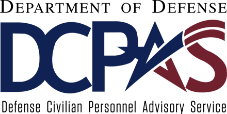DoD Mentoring
Program Overview
The purpose of the DoD Mentoring Program is to provide Mentors & Mentees with:
- Mechanisms to establish voluntary, cooperative, and supportive relationships with the intent of improving specific skills and competencies.
- Tools and resources to help achieve their goals (and support supervisors seeking assistance in encouraging their employees in this transformative arena).
DoD Mentoring Program also provides guidance, policies, and resources for agencies looking to establish a successful mentoring program or enhance an existing mentoring program. Our goal is to reinforce and influence an enduring mentoring culture throughout the Department, by providing mentoring resources to individuals and organizations.
What is Mentoring?
- Someone sharing their knowledge, skills, and experience with another person to help them progress. Mentoring provides employees vital resources and guidance in improving professional performance, personal growth, and career decision making. It’s accomplished through many different forms, discussed below.
- Benefits of Mentoring for DoD Employees
- Increase self-awareness and self-discipline
- Encourage individuals to grow beyond expectations
- Obtain/receive positive and constructive feedback on professional and personal development areas/li>
- Improve technical competence
- Organizational Benefits of Mentoring
- Enhances performance helping teams improve as members increase in competence, awareness of personal biases, and miscellaneous areas of interest, etc.
- Increases organizational knowledge raising understanding of various stakeholder roles, contributions, and importance to the unit’s mission.
- Fosters commitment increasing the understanding and acceptance of values and goals. It enhances employee engagement, alignment, and retention. /li>
- Supports recruitment promoting the DoD as an employer of choice because it shows commitment to its people and their personal/professional development.
- Facilitates leadership development enabling transfer of knowledge, skills, insights, and values.
- Improves succession planning increasing use of the DoD’s Human Capital Operating Plan and succession development efforts, improving the talent bank while expanding capabilities of members in the pool.
- What is the difference between coaching and mentoring?
- Mentors impart personal experience, subject matter expertise, learning, and advice to less experienced members (in their chosen field or career path).
- Coaching is a collaborative approach intended to support clients to achieve their goals by questioning to facilitate awareness and self-directed learning. Ideal coaches are curious; they do not require any knowledge, skills, or experience in the client’s profession.
- INFORMAL occurs between employees when one gains knowledge and experience from the other through an unstructured professional relationship. It does not include specific goals or desired outcomes. Informal mentoring often pair together through mutual respect, shared experiences, and/or common interests which sometimes will develop into a long-term friendship.
- FORMAL also known as planned/structured mentoring, is where mentors and mentees are matched together based on specific selection criteria or common professional backgrounds. It often includes specific goals and measurable outcomes. The Mentor and Mentee sign a formal mentoring agreement that outlines expectations and obligations to formalize the relationship and goals/outcomes.
- SITUATIONAL is usually short-lived and happens for a specific purpose such as preparing for a board or a new assignment.
- SPEED approach is for individuals to receive information from several mentors in a short-period of time. Modeled after the 'Speed Dating' concept, both parties are provided the opportunity to share knowledge and experiences.
- FLASH is a one-time meeting or discussion featuring experts in their fields (mentors) and employees (mentees). The participants break out into small groups for two or three rounds of mentoring. Each group has one mentor to six or eight mentees for a 30-minute mentoring session. The intent is for an interactive engagement in which all participants in the small group have an opportunity to share in the conversation. After each round, mentors move to the next table and the next iteration begins.
- PEER approach is usually a relationship with an individual within the same grade, organization, and/or job series. The purpose of peer mentoring is to support colleagues in their professional development and growth, to facilitate mutual learning and to build a sense of community. Peer mentoring is not hierarchical, prescriptive, judgmental or evaluative.
- IDENTIFICATION STAGE Identify your mentorship needs and determine what you hope to learn. Consider your personal and professional goals and what it would take to achieve them. Leverage resources, tools, and/or your professional network to identify any potential mentors.
- PREPARATION STAGE Both Mentor and Mentee must want to establish the mentoring relationship. They should understand the purpose of the relationship, expectations, goals, risks, and rewards.
- INITIATION STAGE The Mentor and Mentee set the parameters, discuss and set goals, decide on timeframes, and agree to a plan.
- CULTIVATION STAGE This is the stage where the Mentor teaches job skills, provides guidance, lends support, opens doors, and provides counsel. The Mentee works to improve performance, learn new skills, follow guidance, and actively learn the organization, its goals and "ethos."
- TRANSITION STAGE During the transition process, there are a few activities to complete: Review the Mentee’s Action Plan and developmental goals to measure progress; celebrate your successes and share your appreciations about each other; reflect on your learning and growth over the mentoring time period; and share what worked well.
- CLOSURE STAGE Parties may decide to terminate the association due to positive or negative factors at any time. Both Mentors and Mentees should feel free to end mentoring relationships that do not meet their expectations. .
Coaching versus Mentoring
Types of Mentoring
Mentoring 101
Formal mentoring programs frequently pair participants for six months up to one-year. Typical steps to developing, maintaining, and closing a mentoring connection include the following:
For More Information, please contact
Email: dodhra.mc-alex.dcpas.mbx.dod-mentoring-resource-portal@mail.mil
Address:
Defense Civilian Personnel Advisory Service
4800 Mark Center Drive
Alexandria, VA 22350-1100



